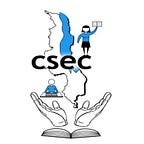INFRASTRUCTURE DEVELOPMENT: THE BUILDING BLOCK TO QUALITY EDUCATION
The Education Hub with Benedicto Kondowe
Strong evidence and basic common sense portrays that quality infrastructure is one of the catalysts to quality education as it facilitates better access, improves student outcomes and reduces dropout rates. From this basis, it remains undeniably embarrassing that 54 years since independence, we are still plagued with inadequate classroom blocks, overcrowded classrooms and disability unfriendly infrastructure.
Despite efforts to provide “free and compulsory” primary education, deteriorating and inadequate infrastructure has proven to be a huge barrier to quality of education because government been unable to meet the demands of the growing enrolment. It should be noted that according to the education sector performance report of 2019/20 the pupil to permanent classroom ration has decreased from 122 students in 1 class in 2016 to 116 in a class as of this year. The report attributes the decrease to the low-cost classroom constructions that were completed this year.
What seems to be clear is that the availability of infrastructure still remains falls short of the recommended 60 students to a single class. The Education Management Information System states that this year approximately 2.1 million children still learn under trees. This leaves then vulnerable to bad weather conditions such as heat, wind and environmental distractions. Moreover, when it rains, lessons are likely halted altogether.
In addition, providing equitable access to secondary education remains one of the major bottlenecks that government is facing. In November 2019, the Secretary to Education bemoaned the low transition rate of 36 per cent from primary to secondary. This means that 64 per cent of capable learners are excluded from attaining secondary school education due to inadequate infrastructure among other factors. As of this year, roughly 2 million learners who qualified for secondary school were not integrated into the system because the system is simply incapable of absorbing them. What is evident is that the gains in enrolment at primary level are quickly lost when it comes to transitioning to secondary school.
In addition to this, most schools do not have disability friendly infrastructure such as rumps to cater for learners who cannot walk. This automatically excludes such special needs learners. Thus, lack of disability friendly infrastructure is an impediment to achieving education for all goals.
The state of infrastructure development in the education sector is nothing less than a joke. At best, most schools consist of deplorable buildings that are most likely a death trap to learners. This in tandem with the last publication that revealed that we lose millions of kwachas and valuable learning time every year due to disaster that destroy the already limited structures.
The fact is that a good school infrastructure, with renewed spaces, makes it possible for children and youths that live in remote areas to study and, in addition, tends to improve the attendance and interest of students and teachers in learning. For this same reason, investments in school infrastructure have an essential role in solving access problems of students to the school system and to improve their performance. Empirical evidence indicates that there is a direct relationship between school infrastructure and educational performance, and that investments in educational infrastructure contribute to improve the quality of education and the economic performance of countries.
Yet, there seems to be a lack of political will and effort to invest more quality structures for the safe learning of our learners across the board. We, at the hub, believe that investment in sustainable and quality learning shelters can be a short-term solution. However, adequate funding should be allocated for the expansion of classroom blocks, offices, and teacher houses.
In this day and age, over-crowding of classrooms, and use of trees as makeshift classes is a travesty. It is high time we and move towards quality infrastructure for our students. As Eleanor Roosevelt once stated: “The future belongs to those who believe in the beauty of their dreams”. We, at the EduHub, believe that poor or lack of infrastructure is a hindrance for learners to live the beauty of their dreams. Therefore, the duty bearers have the obligation to provide a school environment that triggers the motivation among the learners to learn, and teachers to teach.
Send your views to eduhub2020@gmail.com
